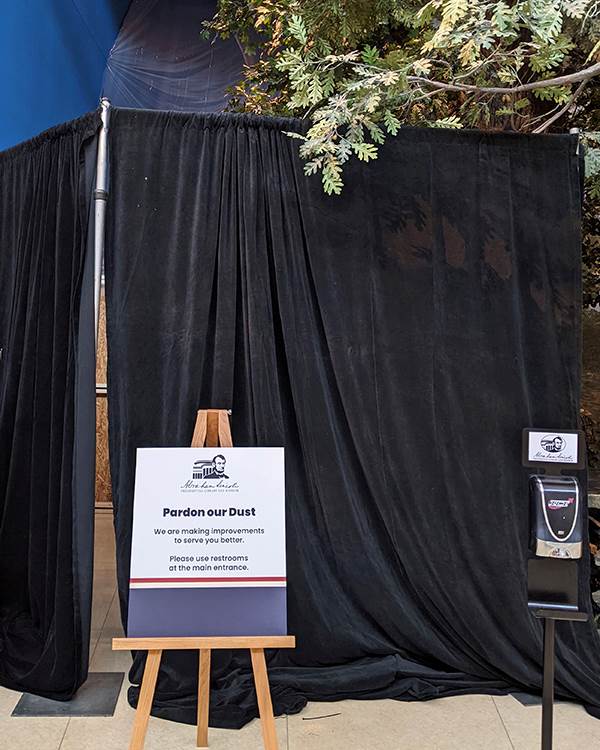Our visitors over the next few weeks may notice some construction. We apologize for the inconvenience, but we think you’ll agree with us that the projects are important improvements.
Some are just maintenance as part of caring for a 16+-year-old building – important but not exciting. The ceiling in our main plaza needs repairs in a couple of places, some bricks are worn down, a section of old floor tiles needs to be replaced, and so on.
Other work represents early steps in our efforts to update the museum’s offerings. We have a small theater space called the Mr. Lincoln Theater. It’s located just off the main plaza with a low wall at the entrance which makes the spot less than inviting. We’ll be taking down that wall to open up the space and, we hope, encourage visitors to stop and watch the short films playing there.
Additionally, we’re taking out the large video wall that visitors saw when they stopped by the information desk to allow for a more open and inviting gateway experience. Visitors will be able to look out our front windows and see the Lincoln-Herndon law office two blocks away.
Finally, the children’s play area known as Mrs. Lincoln’s Attic has been closed and temporarily replaced with what we’re calling the Imaginarium. Created 16 years ago, Mrs. Lincoln’s Attic was intended to be a space to help supplement the museum experience for children. As the museum industry has changed and we have a greater understanding of childhood development, we’ve learned that families want more enriching and engaging experiences for everyone to participate in together.

The Imaginarium, a prototyping space, lets us leverage family experiences for greater community feedback and support. Creating authentic conversations with our community means we must be flexible, willing to grow, and open to risk taking – similar to the way that scientists experiment and test hypotheses – in order to arrive at a conclusion that embraces our community’s needs. Prototyping allows us to transform the exhibit conversation from a top-down or in-out approach to an outside-in process.
Museums should be community-oriented places where visitors feel welcomed and included. Taking down a wall may not seem like much, but it presents an opportunity to open what had been a closed space and reorient ourselves as an institution to our neighbors and community-at-large. By taking down a wall and creating a more relevant family exhibit, we’re trying to say with words and actions that “You are welcome here.”